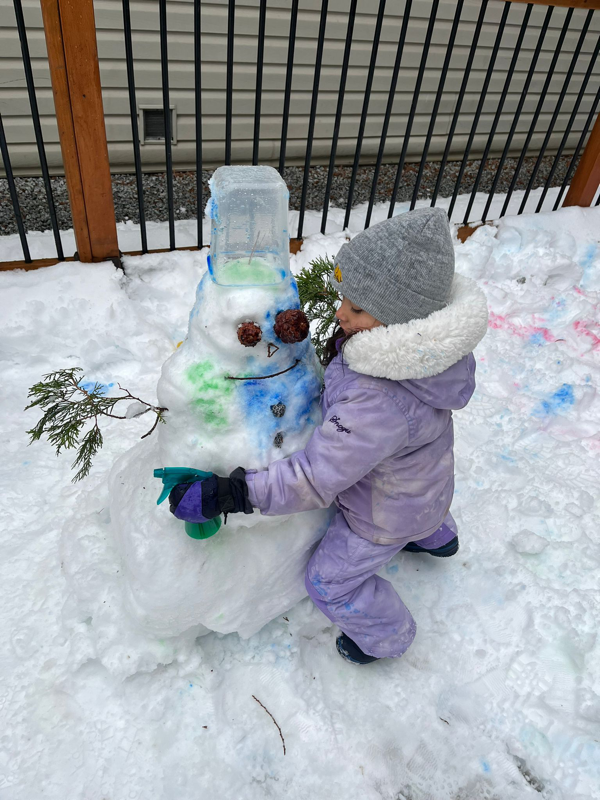|
One of our favorite ways to delight in a crisp breeze is to take a stroll down the path near our learning place. A sweet scent of fresh air lingers in the air throughout our walk. Our familiar views of trees and fields never grow old as there is always something extra to observe. We pause to trip our heads up as a hanging leaf onto a silver thread, closely overhead, invites us to ponder. Our above encounter with a ladybug sitting on Brooks’ shoe is one of the many extraordinary gifts sprinkled through an otherwise ordinary day. These are the moments we might have missed if we choose to let our busy days to rush us through instead of slowing down to pause and be present. We are sure there are many more we have missed when our focus wanders. Luna and Brooks choose to be in the moment to exhibit kindness toward the ladybug. Luna: “Where is her mommy?” Brooks: “Let’s make a home for her.” Slowly but surely Brooks and Luna intently collect for leaves around them. Brooks gently offers a dry leave for the ladybug to crawl onto. Luna carefully adds a few leaves on top to create layers of shade as part of a home. Peer relationship refers to a kind of interpersonal relationship developed in the process of interaction of individuals that are closely connected with each other based on shared interests and friendships (Rohrbeck and Garvin, 2014). Through his observation, Hudson gains self-awareness and demonstrates an interest in pinching and adding leaves on top of a rectangle board. Being inspired by the storybook's character, Fletcher the fox, who cares when leaves blown by the wind, Felix enjoys weaving ribbons in and out. This learning experience involves investigating how materials can be linked and their relationship to one another. This indirectly reflects our relationships with self and others, too. Putting effortful attempts in writing a message is Elie's way to express her compassionate feeling toward trees and leaves. She likes to include heart shapes as part of her message. Collecting leaves, small twigs or any other fairly small or flat item from outdoors enables us to learn about the characteristics of leaves. Next to a light table, George finds some coloring implements. He has been further observed to hold an implement to draw circular lines on top of the veins of the leaves. In this way, he records what he has seen and recreates them on his own. It is as much about what we do every day, the actions we take and words we use for example, as it is about what we think, what we understand and what we learn about sense of identity. Therefore, we pose below questions to ourselves in honoring the meaning for the National Day for Truth and Reconciliation. Through an invitation to wear orange shirts provides us with possibilities to unpack our shared layers of understanding. Emelia asks, "Why do we wear orange shirts?" Brooks shares, "Because today is an orange shirt day". Emelia asks again, "Is it simply for that reason? Or is there another story behind it?" The latter provokes children's interests. We listen to the story of Phyllis Webstad about her orange shirt which has been taken away from her and never been returned. After sharing our various feelings, we continue with exchanges of our thoughts of below reflection questions. What is truth? How does it look like in our everyday moments? What is reconciliation in our ordinary moments? How do we understand its extraordinary out of our ordinary moments? Through our everyday moments we unpack our shared understandings on taking ownership of our actions and taking responsibilities for our actions, Kindest,
Children & Friends.
0 Comments
Leave a Reply. |
No part of this publication may be reproduced, distributed, or transmitted in any form or by any means, including photocopying, recording or any other electronic or mechanical methods, without the prior written permission of the publisher.
Archives
July 2024
|










